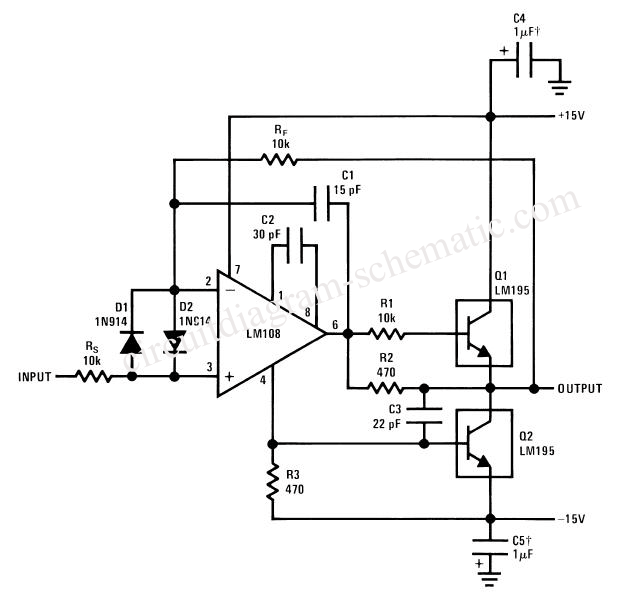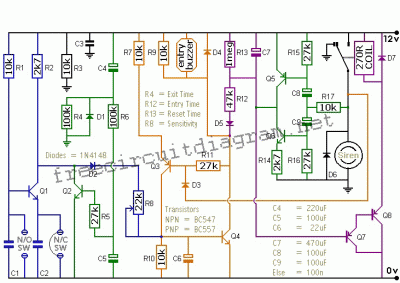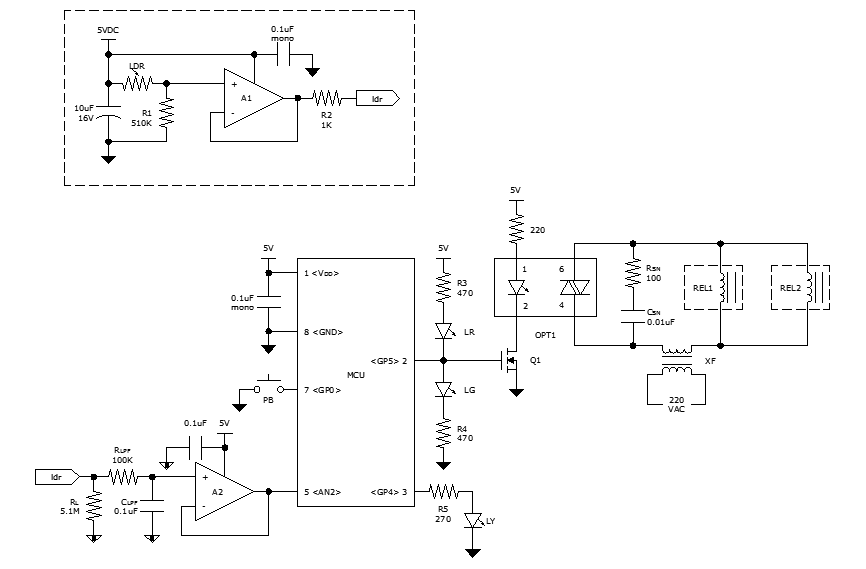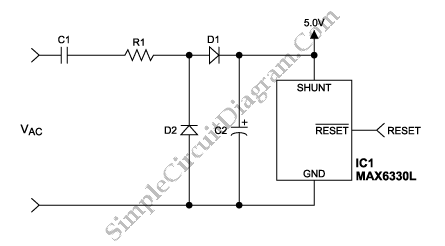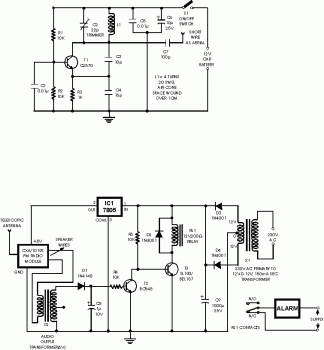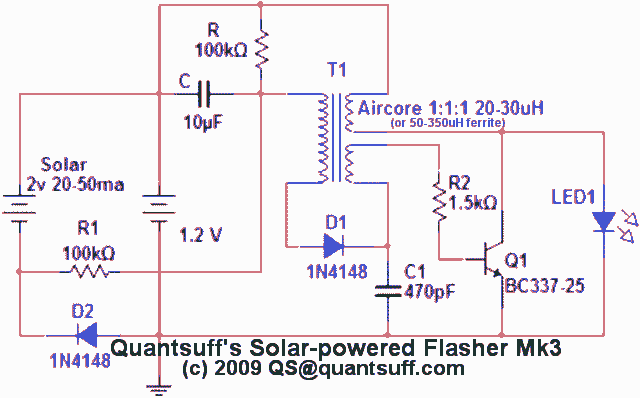
low current relay circuit

This circuit design for a low current relay is intended for use in battery-operated electronic devices, with an operating current in microamperes (µA). It utilizes a bistable relay and additional components to enable the relay to function similarly to a monostable relay. A bistable relay retains its last state when power is turned off, but typically requires a trigger current of at least 50mA. In contrast, a monostable relay returns to its original state when power is removed. The operational mechanism of this circuit involves charging capacitor C1 through diode D1 and the relay coil when power is turned ON, activating the relay. Diode D1 ensures that the base of transistor T1 remains more positive than its emitter, keeping both T1 and T2 in a blocked state. When power is turned OFF, T1's emitter is connected to the charge voltage at the positive terminal of C1, while the base and the relay coil connect to the negative terminal of C1, allowing T1 and T2 to conduct. This enables C1 to discharge through T2 and the relay, activating the relay in the opposite state. The circuit operates with a low current draw of approximately 150 µA. For optimal performance, it is recommended to select the relay's operating voltage at 2/3 to 3/4 of the main power supply; for instance, when using a 12V power supply, a 9V relay should be chosen.
The low current relay circuit is particularly advantageous for battery-powered applications due to its minimal power consumption. The use of a bistable relay allows the circuit to maintain its state without continuous power, significantly extending battery life. The charging mechanism involving capacitor C1 and diode D1 ensures a rapid response time when the circuit is powered on, while the careful arrangement of transistors T1 and T2 facilitates a smooth transition between states when power is removed.
In practical implementation, the selection of components such as the relay and capacitors should be made considering the specific application requirements, including the expected load and switching frequency. The relay must be capable of handling the load current while remaining within the specified voltage range to prevent damage or unreliable operation. The use of low-value resistors in series with the relay coil may be considered to fine-tune the operating current and ensure compatibility with the power supply voltage.
Overall, this circuit design exemplifies an efficient method for controlling a relay with minimal power consumption, making it suitable for various low-power electronic applications where battery life is a critical factor.This is a design circuit for low current relay circuit is designed to be used in battery operated electronic devices. Its operating current is in micro amperes ( µA). This is done by using a bistable relay and adding some components to force the relay to behave like a mono stable relay.
A bistable relay stays at its last state when the power is tu rned off but consume at least 50mA trigger current. A mono stable relay switches back to its original state when the power is turned off. Here`s the figure of the circuit; How this circuit can operate When the power is turned ON, the C1 charges via D1 and the relay coil and this current activates the relay. D1 ensures that the base of T1 is always more positive than its emitter and because of this T1 and T2 are always blocked.
Once the power is turned OFF, the emitter of T1 is coupled to the charge voltage at the positive pole of C1. Its base and the relay coil on the other hand are coupled to the negative pole of C1 and now T1 and T2 conduct, C1 can discharge through T2 and relay.
The current flows to the relay coil but in reverse order so is activated to its other state. It has the advantage of consuming little current, around 150 µA. For a reliable operation, select the relay`s operating voltage as 2/3 to 3/4 of the main power supply. For example is using a 12V power supply select a 9V relay. 🔗 External reference
The low current relay circuit is particularly advantageous for battery-powered applications due to its minimal power consumption. The use of a bistable relay allows the circuit to maintain its state without continuous power, significantly extending battery life. The charging mechanism involving capacitor C1 and diode D1 ensures a rapid response time when the circuit is powered on, while the careful arrangement of transistors T1 and T2 facilitates a smooth transition between states when power is removed.
In practical implementation, the selection of components such as the relay and capacitors should be made considering the specific application requirements, including the expected load and switching frequency. The relay must be capable of handling the load current while remaining within the specified voltage range to prevent damage or unreliable operation. The use of low-value resistors in series with the relay coil may be considered to fine-tune the operating current and ensure compatibility with the power supply voltage.
Overall, this circuit design exemplifies an efficient method for controlling a relay with minimal power consumption, making it suitable for various low-power electronic applications where battery life is a critical factor.This is a design circuit for low current relay circuit is designed to be used in battery operated electronic devices. Its operating current is in micro amperes ( µA). This is done by using a bistable relay and adding some components to force the relay to behave like a mono stable relay.
A bistable relay stays at its last state when the power is tu rned off but consume at least 50mA trigger current. A mono stable relay switches back to its original state when the power is turned off. Here`s the figure of the circuit; How this circuit can operate When the power is turned ON, the C1 charges via D1 and the relay coil and this current activates the relay. D1 ensures that the base of T1 is always more positive than its emitter and because of this T1 and T2 are always blocked.
Once the power is turned OFF, the emitter of T1 is coupled to the charge voltage at the positive pole of C1. Its base and the relay coil on the other hand are coupled to the negative pole of C1 and now T1 and T2 conduct, C1 can discharge through T2 and relay.
The current flows to the relay coil but in reverse order so is activated to its other state. It has the advantage of consuming little current, around 150 µA. For a reliable operation, select the relay`s operating voltage as 2/3 to 3/4 of the main power supply. For example is using a 12V power supply select a 9V relay. 🔗 External reference
